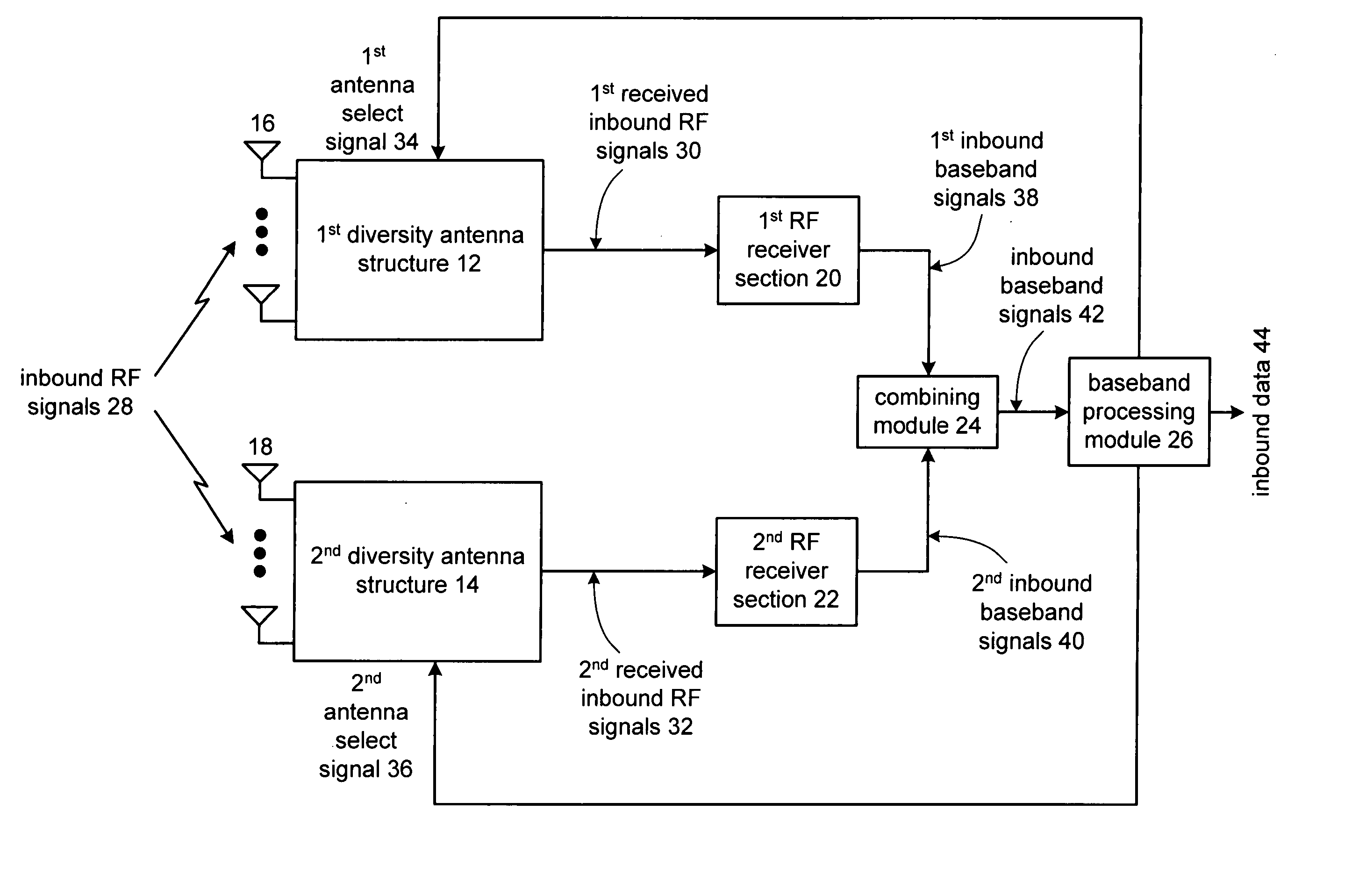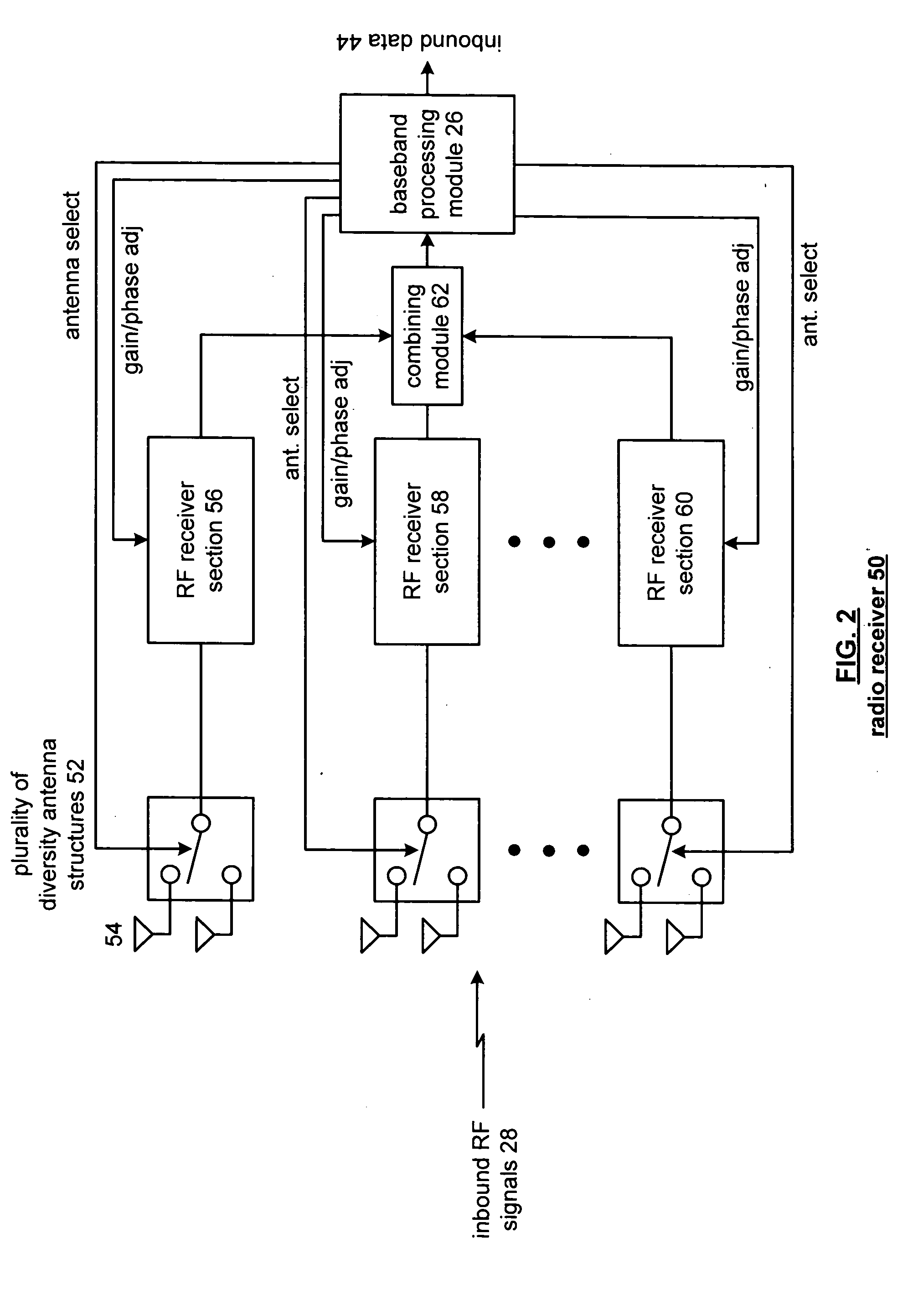Radio receiver having a diversity antenna structure
a radio receiver and antenna structure technology, applied in the field of wireless communication systems, can solve the problems of low signal to noise ratio, interference with the receiver's ability,
- Summary
- Abstract
- Description
- Claims
- Application Information
AI Technical Summary
Problems solved by technology
Method used
Image
Examples
Embodiment Construction
[0017]FIG. 1 is a schematic block diagram of a radio receiver 10 that includes a first diversity antenna structure 12, a second diversity antenna structure 14, a first radio frequency (RF) receiver section 20, a second RF receiver section 22, a combining module 24, and a baseband processing module 26. The first diversity antenna section 12 includes a plurality of antennas 16 and the second diversity antenna section 14 includes a plurality of antennas 18. Each of the plurality of antennas 16 and 18 includes at least two antennas that may be spatial diverse antennas and / or polar diverse antennas.
[0018] In operation, the receiver 10 receives inbound RF signals 28 via the plurality of antennas 16 and 18. In one embodiment, a transmitter transmits the RF signals 28 in accordance with one or more wireless communication standards (e.g., IEEE 802.11a) such that the wireless communication between the transmitter and the receiver 10 is generally referred to as a single input multiple output ...
PUM
 Login to View More
Login to View More Abstract
Description
Claims
Application Information
 Login to View More
Login to View More - R&D
- Intellectual Property
- Life Sciences
- Materials
- Tech Scout
- Unparalleled Data Quality
- Higher Quality Content
- 60% Fewer Hallucinations
Browse by: Latest US Patents, China's latest patents, Technical Efficacy Thesaurus, Application Domain, Technology Topic, Popular Technical Reports.
© 2025 PatSnap. All rights reserved.Legal|Privacy policy|Modern Slavery Act Transparency Statement|Sitemap|About US| Contact US: help@patsnap.com



